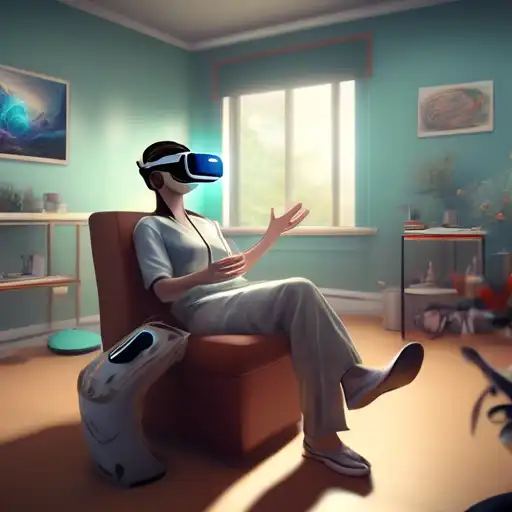The Transformative Role of Virtual Reality in Modern Therapy
Virtual Reality (VR) technology has transcended its initial entertainment-centric applications, venturing into the realm of therapy with promising results. This innovative approach is revolutionizing the way therapists address various mental health issues, offering patients immersive experiences that were once unimaginable. From treating phobias to aiding in physical rehabilitation, VR is setting a new standard in therapeutic practices.
Understanding VR Therapy
VR therapy involves the use of virtual reality technology to create simulated environments for therapeutic purposes. These environments can be tailored to meet the specific needs of each patient, providing a safe and controlled setting for exposure therapy, relaxation, and skill-building exercises. The immersive nature of VR allows individuals to confront their fears, practice social interactions, and develop coping mechanisms in a way that feels real yet is entirely within their control.
Applications of VR in Therapy
The applications of VR in therapy are vast and varied. Below are some of the most impactful uses:
- Exposure Therapy: VR is particularly effective in treating phobias and PTSD by gradually exposing patients to their fears in a controlled environment.
- Pain Management: Through distraction and immersion, VR has been shown to reduce perceived pain levels in patients undergoing painful procedures.
- Physical Rehabilitation: VR games and exercises can motivate patients to engage in physical therapy, improving outcomes.
- Social Skills Training: Individuals with autism or social anxiety can benefit from practicing interactions in virtual social scenarios.
The Benefits of VR Therapy
VR therapy offers several advantages over traditional methods. It provides a safe space for patients to face their fears without real-world risks. The ability to customize scenarios makes it a versatile tool for treating a wide range of conditions. Additionally, VR therapy can be more engaging and less intimidating for patients, leading to higher compliance and better outcomes.
Challenges and Considerations
Despite its potential, VR therapy is not without challenges. The cost of VR equipment and the need for specialized training can be barriers to widespread adoption. There are also concerns about the long-term effects of VR use, though research is ongoing. It's important for therapists to carefully assess each patient's suitability for VR therapy and to use it as part of a comprehensive treatment plan.
The Future of VR in Therapy
As VR technology continues to evolve, its applications in therapy are expected to expand. Advances in AI and machine learning could lead to even more personalized and effective therapeutic experiences. With ongoing research and development, VR has the potential to become a staple in mental health and physical rehabilitation treatments.
For those interested in exploring the intersection of technology and therapy further, consider reading about the impact of AI on mental health or innovative therapies for anxiety.
In conclusion, VR is transforming the landscape of therapy, offering new hope and possibilities for patients and therapists alike. Its ability to create immersive, controlled environments makes it a powerful tool in addressing a wide range of mental and physical health issues. As technology advances, the potential for VR in therapy is limitless, promising a future where healing is more accessible, effective, and engaging than ever before.
